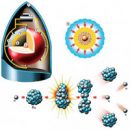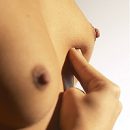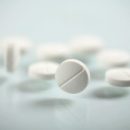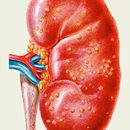Symptoms and reasons for the development of fibrous-cystic mastopathy. Forms of the disease. Diagnosis and treatment of nodular and diffuse fibrous-cystic mastopathy.
Content
- Classification
pathological processes - Symptoms
Fibrozno-cystic mastopathy - Diagnostics
Fibrozno-cystic mastopathy - Treatment
cystic and fibrous mastopathy

Fibrozno-cystic mastopathy develops as a result
Hormonal failures in the body. Represents benign
Education capable in some cases go to malignant
condition. If the disease is detected at the first stages of their development, it is usually
Successfully cured.
Mastopathy Fibrozno-cystic — It is benign
Breast disease leading to proliferative and regressive
Changes in which the ratio of connective tissue and epithelium is disturbed.
The favorable background for its development is the presence of gynecological
Diseases. Occurs in 30-70% of women of childbearing age.
Classification
pathological processes
Eliminate the nodal and diffuse form of mastopathy. Disease B
diffuse form is accompanied by the formation of ferrous, fibrous or
cystic component. Often develops in mixed form, with the presence of all
Components. The most common is diffuse fibrous cystic
Mastopathy. The disease begins with the growth of connective tissue and
Forming small heavy and nodules. In the absence of necessary treatment
The disease goes into an integrated form with the formation of dense nodes of different sizes
— from pea to walnut.
Views
Mastopathy
It is customary to divide the disease for 2 varieties:
-
Proliferative — with active growing
epithelium and probability of the transition of neoplasms in a malignant state; -
unpoliferative — With the predominance of regressive
Processes.
In the proliferative form of the disease, 3 degrees of it
Development:
-
1 degree — There are symptoms of pathological
process, but the proliferative changes of the epithelium do not occur yet; -
2 degree — Signs begin to appear
proliferation; -
3 degree — epithelium cells subject to
proliferation, transform and acquire atypical character.
Causes
Fibrozno-cystic mastopathy
The main reason — Hormonal disorders that provoke
Strusting of fabrics or, on the contrary, regressive changes. Dairy
glands are sensitive to sex hormones produced by ovaries, because
Estrogen-Gestagon oscillations are the main provocative factors of development
Pathology.
Group
Risk
The risk group includes women who have not giving birth to 30 years,
suffering overweight, high arterial pressure and redundant
blood sugar level. The probability of developing pathology increases in women,
several times interrupted pregnancy and refused to breastfeeding after
Rodov. The disease can also develop after severe stress or
Finding the nervous voltage for a long time.
Symptoms
Fibrozno-cystic mastopathy
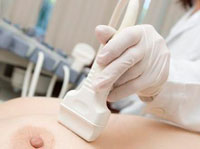
Most prone to change ulusing square gland
Due to the characteristics of the structure and blood supply. At the early stage
Diseases in the second half of the cycle and during menstruation is observed
An increase in the size of the breast and pain in it. Arises
The feeling of gravity in the chest may appear the state of anxiety and
irritability.
In the later stages, the following clinical
painting:
-
constant pain in the gland, not
depending on the menstrual period and increasing when touched; -
a significant increase in breast size and
change its contours; - constantly feeling of gravity and discomfort;
- Pain transition to the axillary region;
-
separation from the nipple of the serous substance, externally
Remembering colostrum.
Diagnostics
Fibrozno-cystic mastopathy
After examining the patient — survey about the presence of symptoms and
Palpation — Appointed laboratory and instrumental research. At
Laboratory studies are analyzed blood test and determines the content in
her hormones. Instrumental methods include ultrasound
Survey, computed tomography and mammography. The main methods
Mammography (X-ray examination) and ultrasound, which
safe and have no contraindications and age limitations.
Procedures are held by 6-12 months of the monthly cycle, in the absence of menstruation — On any day. It is possible to apply invasive methods (puncture and biopsy). At
Detection of sections with a modified structure or nodal formations usually
Biopsy of the breast fabric and cytological studies of the sample are carried out.
Selection of nipples are also sent to cytological analysis.
Treatment
cystic and fibrous mastopathy
Treatment is selected individually depending on
from the form of mastopathy, the state of the hormonal system and the presence of gynecological
Diseases. The purpose of therapeutic methods is to reduce the number of cyst
and sections of fibrous tissue, control of the level of hormones in the blood and functions
Liver, kidney and CNS. Measures to eliminate endocrine pathologies and
inflammatory processes. At the launched stages, when moving the disease in
nodal shape, possibly surgery.

